





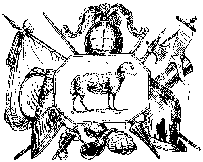
Compiled by R C Moorby © 2004
The naming of Long Preston
Long Preston in 1086 was known as 'Prestune' from the old English, preos plus tun: the priest's farmstead or town. 'Long' was added later to distinguish this settlement from the many other Prestons and refers to its linear development.
The area of Long Preston must have been inhabited from prehistoric times for remains from this period have been found at Victoria Cave on the hills above Settle. A Stone Age axe head was found in the area of Bookil Gill in the parish of Long Preston, possibly when the sandstone quarry was in operation.
Then came the bronze and iron ages, and later the tribes of the ancient Britons, in this area known as the Brigantes. The name seems to mean 'the high one', which is apt for a group of people living in the more mountainous regions of Britain. Their territories included our present counties of Cumbria, Lancashire and Yorkshire.
the ancient Britons, in this area known as the Brigantes. The name seems to mean 'the high one', which is apt for a group of people living in the more mountainous regions of Britain. Their territories included our present counties of Cumbria, Lancashire and Yorkshire.
Historians know little about the Brigantes before the arrival of the Romans. Presumably their ruler at this time was one of those who surrendered to Claudius at Colchester in AD 43, but they are not mentioned by name. By the early 50s AD they were ruled by Queen Cartimandua, who lost her control of the tribe in AD 69, following an uprising led by her ex-
The Romans
There does not appear to be any sign of Roman habitation at Long Preston, although there was a fort at Elslack and a villa at Gargrave, near Skipton. There is an opinion that there was a camp near the church but nothing has ever been found or proved. According to The King's Highway in Craven by John J Brigg.
On the ascent of the old road from Long Preston to Settle there are traces of an older road, known as the Queen's Road, to which a Dr Villy assigns a Roman origin.
England had lost most of the prosperity it had enjoyed during the more settled government of the Romans. The land had, to a great extent, got out of cultivation, and was again covered with forest which swarmed with wolves and other wild animals to such an extent that sheep and cattle had to be watched day and night to prevent their destruction.
In Yorkshire such ferocious animals had become so numerous that the inhabitants, finding themselves unable to cope without assistance, petitioned King Athelstan for help, promising in return to pay a thrave of corn annually for every carucate of land. He acceded to their request and built lodges in the forests where men and dogs were stationed for the protection of the people, their flocks and herds.
One of these lodges was said to be at Hellifield. At the time it would not have been safe to travel from Hellifield to Long Preston, especially in winter by night, for fear of being attacked and perhaps devoured by wolves.
The Domesday Book
About fourteen years after the Norman conquest, AD 1080, when William was firmly established upon the throne, he ordered a great national survey to be carried out, known as the Domesday Book. This informs us that at the conquest 'Ulf had three casucates in Prestune and a church', so that evidently a church existed here in Saxon times.
This part of the country fell to the share of Roger de Poitou, who appears to have conveyed it to a family named Amundeville in the manor of Long Preston. In the reign of King Stephen, Walter Amundeville gave the church and living to the Priory of Embsay, which was afterwards transferred to Bolton.
The Prior and Canons appointed the Rector but took care to reserve a good share of the endowment to themselves, ie a large portion of the tithes and five-
The manor passed to Richard, Earl of Gloucester, then to Richard de Bruis; afterwards to his brothers, then back to Gilbert, Earl of Gloucester. Again it changed owners and became united to the Percy fee where it remained until the Cliffords acquired it by marriage in 1493, along with all Ribblesdale from Salley to Pennigent.
This family kept possession of the property until about the end of the 16th century, when it was conveyed by George, Earl of Cumberland, who had impoverished his estate, at least in part, by his patriotic efforts in resisting the invasion of England by the Spanish Armada. These conveyances were long leases (some for 9,000 years!) generally to the tenants, at nominal rents.
The conquest of England by William the Conqueror was by no means completed when the power of Harold was crushed and he himself slain at the battle of Hastings. The northern earls resisted the Conqueror to the utmost of their ability, and to punish their rebellion William laid to waste all this part of the country, inflicting fearful barbarities upon the inhabitants.
Craven must have suffered dreadfully, for when the survey was made six parts out of seven were laid waste. The state of this neighbourhood may be imagined when it is remembered that only the arable and meadowlands were in the survey, no account being taken of the open common ground. For three or four centuries after the conquest there were no fences except where the tofts (village residences) had a croft attached to them.
The Ings, these days valuable meadow and pasture land, were then (and for long afterwards) a swamp impassable in wet weather -
The Scottish invasion
In 1138, David, King of Scotland, sent part of his army into Yorkshire, under the command of his nephew, and put Craven to the fire and sword. An old historian describes this visitation as follows: 
'In this work of destruction no rank or age and neither sex was spared; children were butchered before the faces of their parents, husbands in the sight of their wives, and wives of their husbands, matrons and virgins of condition were carried away indiscriminately with other plunder, stripped naked, bound together by ropes and thongs, and goaded along with the points of swords and lances.
Similar outrages had been committed in former wars, but never to the same extent. In their march northwards, however, some of the factors touched with compassion, set their prisoners at liberty, as offerings to the church of St. Mary at Carlisle, but the barbarous Picts dragged away their wretched captives without mercy into their own country. In short, these brutal savages, to whom adultery and incest were familiar, after having fatigued themselves with act of lust and violence, either retained the females as slaves in their own houses or sold them like cattle to other barbarians.'
This is not a recital of slaughter and outrage that took place in some distant country, but of what happened in Craven. This Long Preston of ours would have borne its full share.
Trade
At the time there were few or no shops. Anything other than local produce had to be procured from the great fairs. The monks of Bolton attended Boston Fair in Lincolnshire to buy fine cloth, wines, spices etc, which were brought to York by water, and thence by packhorses, as there were no roads worth the name, and hardly any wheel carriages.
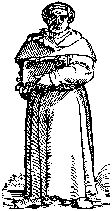 It appears that the monks would make purchases of various kinds for as many of their neighbours as could afford to pay for unusual luxuries. In 1299, Roger, Rector of Long Preston was indebted to the monks for the then large sum of £66 14s 4d. This debt was partially incurred for cloth, etc (although one item was the carcass of an ox. Could not the Rector procure beef without applying to the monks at Bolton?)
It appears that the monks would make purchases of various kinds for as many of their neighbours as could afford to pay for unusual luxuries. In 1299, Roger, Rector of Long Preston was indebted to the monks for the then large sum of £66 14s 4d. This debt was partially incurred for cloth, etc (although one item was the carcass of an ox. Could not the Rector procure beef without applying to the monks at Bolton?)
But this debt was probably increased for expenses in repairing the church or rectory -
For at this time -
The miserable inhabitants, cowed by continual defeat would, upon the first invasion alarm, quit their wretched habitations of timber, mud, and thatch and fly with their families and scanty remains of flocks and herds to the woods and hills for security.
The Wars of the Roses
In the fifteenth century occurred the dreadful struggle between the Houses of York and Lancaster which for thirty years deluged England with blood.
The Cliffords and the Percys, superior Lords of Craven, took an active part on the side of Lancaster during the whole contest. Their retainers in Craven were obliged by their tenures to be often in the field, and after a bloodbath like that of Towton on Palm Sunday 1461, when Lord Clifford and 40,000 Lancastrians are said to have been slain, there would, no doubt, have been mourning and lamentation in many a Long Preston household.
The leasing of land
As an illustration of the manner in which land was leased in the neighbourhood from these Lords, here is an original tenancy which although dated a century later is probably similar to the agreements made at that time:
Preston: The twelfth of September in one and twenty years of the reigne of our soveringe and lady Queen Elizabeth, 1579. That the Righte Honable Erle of Cumberlands the day and yeare above written haithe demised graunted and letten by thease presnt unto George Boonde, son of Boonde, one part & portion of the Demeanes theare contayninge by estimacon thre acres late in tenure of the saide Thomas, his fathe of the annuall rente of thre shillings. To have and to hold the saide premisses to him and his assigns during the lyffe of the saide Erle and the lyffe of the saide George Boonde and the moytie theareof after his deceasse to his wyffe during her lawful, wedo-
This document shows how small a portion of the consideration due from a tenant to his landlord was the money rent -
The English Yeomanry
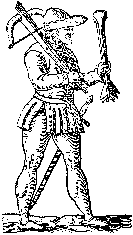 In all the wars of this period the bow was the favourite weapon of the English Yeomanry, who constituted the strength of the army, and every man was obliged by law to be trained in its use from the age of seven years. It became in skilled hands a terrible and fatal weapon. When in training, a man who reached the age of 24 years, by an Act 33rd Henry V111, was not allowed to stand nearer to the butts than 220 yards, the bow was required to be the length of the person holding it. Every man was obliged to be provided with one and a sufficient quantity of arrows, and officers were appointed to see that they were constantly kept ready for service. The arrows were generally feathered from the wing of a goose.
In all the wars of this period the bow was the favourite weapon of the English Yeomanry, who constituted the strength of the army, and every man was obliged by law to be trained in its use from the age of seven years. It became in skilled hands a terrible and fatal weapon. When in training, a man who reached the age of 24 years, by an Act 33rd Henry V111, was not allowed to stand nearer to the butts than 220 yards, the bow was required to be the length of the person holding it. Every man was obliged to be provided with one and a sufficient quantity of arrows, and officers were appointed to see that they were constantly kept ready for service. The arrows were generally feathered from the wing of a goose.
In the 5th year of Edward 1V, an ordinance was made directing that butts should be set up in every township, which the inhabitants were to shoot at, up and down, upon all feast days, under the penalty of one half-
Long Preston population
The population of the parish does not appear to have varied much for a long time. In the year 1591 there were 8 marriages, 32 baptisms and 18 burials; and in 1691 there were 4 marriages, 32 baptisms and 18 burials; and in 1741 there were 6 marriages, 26 baptisms and 18 burials.
In the 16th century rushes were used in the mansions and castles of the nobility instead of carpets; straw was also used for beds, so that we may easily imagine that the yeomen and labourers would not have very luxurious accommodation. It was not until after the tenants had purchased their holdings from George, Earl of Cumberland that the old thatched dwellings upon crocks began to be replaced by better and more comfortable erections. The last of these dwellings in Long Preston disappeared a long time ago; it stood adjoining the highway in front of the Baptist Chapel.
It was about the year 1600 that the first attempt was made to enclose the open commons above the village. It is almost certain that at this time the fences of the larger enclosures were little if anything better than dry dykes..
Before the enclosure of the common fields, gates were hung at the different entrances to the village two of these gates were known as Greengate, and Kirkmangate.
Mrs Cappe describes the 'uncivilised' villagers
A Mrs Cappe (whose father was a vicar here in about 1730) in her autobiography devotes a page to an account of Long Preston and its inhabitants as they were known to her nearly 150 years ago. Her remarks about the people, though more racy than flattering, are likely true enough picture of the times in which she lived. She says:
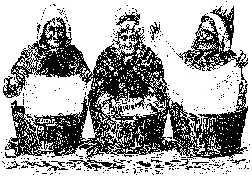 "This part of Yorkshire, at the time of which I am speaking, was insulated from the rest of the Kingdom, not so much by its high mountains as by its almost impassable roads. No wheeled carriages could ascent its rocky steeps, the carriers conveyed their goods in packs upon horses, and I well remember that one of my earliest pleasures was to listen to the sound of the bells hung round the neck of the leader, followed with solemn step by a long trail of his compeers, as they passed stately along the shady lane by my fathers garden.
"This part of Yorkshire, at the time of which I am speaking, was insulated from the rest of the Kingdom, not so much by its high mountains as by its almost impassable roads. No wheeled carriages could ascent its rocky steeps, the carriers conveyed their goods in packs upon horses, and I well remember that one of my earliest pleasures was to listen to the sound of the bells hung round the neck of the leader, followed with solemn step by a long trail of his compeers, as they passed stately along the shady lane by my fathers garden.
The inhabitants of this hilly country were as uncivilised as their mountains were rude and uncultivated. When my father first went there about 1792 almost all the country was divided among a number of small freeholders, or leaseholders holding grants of 900 or 1000 years, made over in feudal times by great barons in exchange for military service. The ground almost everywhere in its primitive state, wholly unenclosed, and notwithstanding every man Knew his own, yet their property being intermingled various subjects for debate and endless litigation were continually arising among them, and being proud from independence and obstinate from extreme ignorance, it was impossible to arbitrate or to compose their differences.
In large open fields consisting of several hundred acres, the ground was nominally divided into what were commonly called 'lands' which had each their appropriate name, and it was my father’s first efforts to prevail upon the different proprietors to exchange with each other distant for contiguous lands. I found a box some years ago, containing a number of these agreements for exchange of small pieces of land, and for some entire purchases, in one of which the sum amounted to no more than £2.10/-
In the township of Long Preston the greater part of the inhabitants who did not earn their living by daily labour, or by some little trade, were, as we have already observed, the small proprietors of land possessing property from generation to generation to the amount perhaps of £10 to £100 per annum. These are denominated statesmen and are divided into two classes, great and little statesmen, the former of whom consider themselves as among the first parsonages in the world.
The usual etiquette is calling upon the lady of a great statesman is as follows; after inviting her guests to come in and make free she dusts the chairs with the corner of her apron, desiring them to be seated, she next takes a brush to sweep the floor, apologising all the time that it was not done before their arrival, then she adjusts her own apparel, and not infrequently goes through the whole ceremony of an entire change of upper garments, standing by her company with great unconcern, and relating the history of her family, when Thomas was born, where George goes to school, how fast he takes his learning &c. &c. Her dress being finished she offers each of her visitors a glass of brandy assuring them that they are welcome as if they were at home, and this being done, she fetches a chair and seats herself by them.”
Village agriculture and trades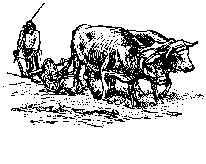
From this time onward Long Preston has been dominated by agriculture and the trades associated with it. In the 1700s and 1800s the inhabitants had various jobs, trades and professions.
On the Enrolment under the Act of Parliament made and passed in the forty-
The following is a description of some of the above mentioned jobs ...
In these times people did not move from area to area very often. Families of the above would remain in the village for generations.
The last doctor who was in residence was H M Clegg. His house and surgery were at Hoyle Hill, opposite the entrance to Back Lane.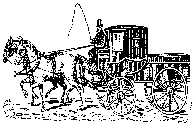
Roads
In the 1750s the turnpike road arrived. From Long Preston to Settle the difference between the old road and the new road is very striking. The new road runs along the valley nearly on the level, while the old road strikes boldly over the moor, crossing Hunter Bark at 1,000 feet above sea level.
There was a toll bar at Long Preston situated between Church Street and Bridge End.
The turnpike road (A65) was raised, widened and straightened through Long Preston in the 1960's. The front of Magna Print was demolished by about fifteen feet. Where the bungalows now stand at West End there was a row of cottages, a barn and a large house. These were all demolished to allow the road to be widened and re-
A bypass was proposed and after a colossal amount of money had been spent on planning it was given the go-
The railway
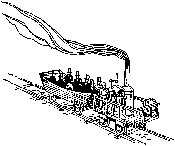 This opened in the 1800s. It is at the southern end of the Settle -
This opened in the 1800s. It is at the southern end of the Settle -
The railway declined in the 1970s and 80s but is now seeing an increase in freight and light passenger traffic.
Again, quoting from The King's Highway, in 1849 the opinion is expressed that "there is danger to the passengers on the road from Skirbeck to Mr Preston's gate at Mearbeck, because of horses being frightened by the sight of engines and carriages on the North Western Railway"; and to free the trustees from responsibility, notice was ordered to be given to the company under the Railway Clauses Consolidation Act 1845.
Village life in the 18th and 19th centuries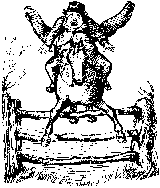
In the 1800s there were two blacksmiths in the village; one situated at Anvil House, opposite the Boars Head, and the other joined onto the Maypole Inn between the house on Maypole Green.
In the 1700's there were two inns; The Kings Head, (situated at the end of Church Street) and the Maypole. In the early 1800's the Kings Head closed and the Boars Head opened, and so it is today. We are lucky to have two inns: in this present day country hotels and inns are closing and being turned into residential homes. These inns and hotels will be lost forever.
In 1801 the population was 573, rising to 808 in 1831 and dropping to 610 in 1961. No doubt because, with the industrial revolution, people moved to the towns and cities to find work in the mills.
The 20th century
People in the 20th century were employed in the village at such places as the garage, wool warehouse, auction mart, farms etc. and in the surrounding area, Johnson & Johnson in Gargrave, Dewhirsts Mill at Skipton and various establishments at Settle. A great many of the houses were rented, therefore the local people could afford to live here.
But in the 1960s people started to purchase their own homes (and, of course, we all know that it is very hard -
In the late 50s and early 60s there was a thriving livestock auction mart, shoe shop, tailors, butchers, bakers, post office, cafés, wool warehouse and corn mill.
Mills
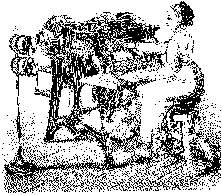 Lower cotton spinning mill (located where Mill Farm is) was built about 1790. The mill was possibly built on the site of an old corn mill. This mill and the corn mill were demolished in 1881 by a great flood.
Lower cotton spinning mill (located where Mill Farm is) was built about 1790. The mill was possibly built on the site of an old corn mill. This mill and the corn mill were demolished in 1881 by a great flood.
Fleets mill cotton spinning mill was three stories high and was water powered, it was unusual in that it had a wind mill to raise the water back to the large dam. Fleets mill is now a barn but the long rows of windows can still be seen and the dams and water courses can still be traced.
Cotton spinning was also carried out in private houses and can be identified by being three storeys.
A latterday corn mill was working up to the 1970's opposite the Boar's Head and was owned by the Dodgson family. It was later sold to Geo. Morrell and is now the site of a housing development.
The first school recorded in the village was part of the endowment to the Hammerton chapel sometime during the reign of Edward IV (1461-
The teaching would probably have taken place in the chapel and the chantry priest would have been the teacher. After the dissolution of the religious houses, this endowment to the chapel was confiscated so it was likely that the school would have closed sometime about 1541.
The Petty School
There are possibly two places where this school was sited. First, it may have been held in the chapel, or in a building near the old vicarage (now Eldon Country Hotel). This building bears a date stone 1672 and may have been the old school which existed until 1819 when a new school was built.
Free Endowed Schools
1. Boys’ School
This was built in Church Lane (now School Lane) in 1819 to accommodate fifty boys. The average attendance was forty-
2. Girls’ School
The girls’ school was situated in the centre of the village (the building on the left of the bus shelter) and was built to accommodate forty-
3. Infants’ School
This school was next to the old schoolhouse and was opposite the girls' school. It was probably built a little earlier than the girls’ school. It had an average attendance of thirty two. It was founded before the boys’ school, but was closed soon after the new Endowed School was opened in 1898.
4. Hartley's Endowed School
The new Endowed School was built at a cost of £3,300. It was built to accommodate two hundred and fifty pupils. It was built of stone from a local quarry, with much of the work being carried out by local craftsmen. The school was opened by the Bishop of Ripon on 3rd January 1898. The number of pupils on the books was one hundred and sixty. A Mr Chorley was the architect.
5. School for young ladies
Late 1800's and held in Riversdale. Mistresses, the Misses Harrison, assisted by visiting masters. A description taken from a poster is as follows.
'Riversdale stands in an elevated position surrounded by open countryside and is situated on the borders of Lancashire and Yorkshire in the romantic and bracing district of Craven. The house has only been erected a few years and is within a few minutes walk from the Long Preston railway station. It is admirably adapted in every respect for scholastic purposes and the grounds afford ample scope for the recreation of pupils.'
Other notable village buildings and sites
Ingle House
A former shop, Conservative Club and Martin's Bank (now Barclays).
Magna Print
Built as a wool warehouse where farmers brought the sheep’s wool. The fleeces were then put into large hessian sacks, compressed to make them compact and then sent to the woollen mills in Bradford. It later became a warehouse for Johnson and Johnson's before becoming Magna Print.
Village Hall.
Originally named The Mechanics’ Institute, it was used as a library and a function room for the village. Was then changed to the village hall and is well used for various functions and activities.
Auction Mart
This was originally on Maypole Green. Before The Green was formed, the surface of the green was concrete to hold the livestock market on. It was known as 'The Concrete' before Maypole Green.
The later auction mart was next to Old School House and is now a housing development "Hartley Green". Where this name comes from is beyond me because the land wasn't owned by the Hartley Trust and is neither a green as it is crammed with houses.
The Alms Houses (Knowles Hospital)
Founded by James Knowles, a native of Long Preston, who after acquiring a fortune in London, established an almshouse with a chapel for the support of ten persons in 1613.
Wesleyan Chapel
This was a large building in the grounds of the present chapel. The corner stone was laid on the 14th April 1892. The building was demolished in 1969. The Sunday school was opened in 1894 and now all the services are held in this building.
Baptist chapel
This building had an upper level so about twice as many people could be accommodated as on a single floor. Was demolished in the 1960's.
Saint Mary's Church
The church was mentioned in the Doomsday Book, and the present building dates from the late 14th or early 15th century.
According to a manuscript dated 1431, a chapel dedicated to Saint Michael was erected at the entrance to the church yard. A number of coloured tiles excavated around the tower seem to support the theory about the site of this chapel.
In 1883 in digging the grave of a Mrs Woof, the sexton, Mr George Wilson discovered near the surface, a very ancient and rudely carved trefoil cross. As there was an empty socket, where formerly a cross had been fitted over the entrance porch of the church, the discovered cross was placed there. Could this have belonged to the old Saxon church?
It was not until 1804 that the first organ was used in the church. The instrument cost sixty guineas and would play twenty psalms on two barrels.
In 1868 an organ was purchased from St Albans Abbey. The organ was enlarged in 1891, the total number of pipes being one thousand, five hundred and forty eight.
The tower is solid except from the staircase to the belfry and a small room.
There are three bells dating from 1762. These were re-
The stained glass windows are very beautiful, depicting various scenes from the bible. They date from the 1870's.
The Gas Works
The works were located close to Long Preston Beck near the railway station in the 1880s. The lessees were Beecroft and Throup. Some of the remains are still to be found.
The Water Works
In the 1880's the manager was Richard Procter. Long Preston Water Trust is a private trust supplying most of Long Preston with water to this day. When gas lighting was installed in the village the water trustees were responsible for the lighting.
Brooklands
Before becoming a private residence this was the Long Preston nursing home. Many of the residents of the village were born here up to the 1950's and 60's.
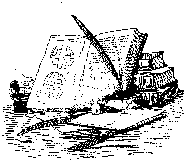
Compiled and © by R C Moorby
|
Cordwainer: |
Shoemaker |
|
Husbandman or husbandry: |
The business of farming and agriculture. |
|
Yeomen: |
A farmer who cultivates his own land. |
|
Yeoman service: |
Honest, hard work just when it was needed. |
|
Cooper: |
A person who makes or repairs barrels. |
|
Yeomen |
13 |
|
|
Servants |
9 |
|
|
Cordwainers |
4 |
|
|
Cloggers |
2 |
In the same family business |
|
Coopers |
2 |
In the same family business |
|
Tanners |
2 |
|
|
Carriers |
2 |
|
|
Butcher |
1 |
|
|
Labourers |
15 |
|
|
Blacksmiths |
5 |
Two in the same family business |
|
Tea dealers |
2 |
|
|
Husbandmen |
3 |
|
|
Farmers |
9 |
|
|
Tailors |
3 |
Two in the same family business |
|
Carpenters |
3 |
|
|
Minister |
1 |
|
|
Inn keepers |
2 |
|
|
Weavers |
23 |
|
|
Shop keepers |
3 |
|
|
Licenced preacher |
1 |
|
|
Mason |
1 |
|
|
School master |
1 |
|
|
Miller |
1 |
|
|
Plasterer |
1 |
|
|
Cotton spinners |
8 |
|

Click here to also read:
“What Bolton Priory and manorial records tell us
about Long Preston in the late medieval period.”
Researched and written by Tony Stephens.
The Tithe Survey of 1841 for Long Preston
